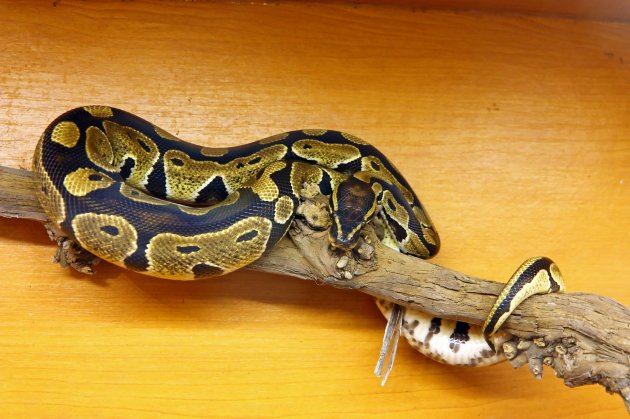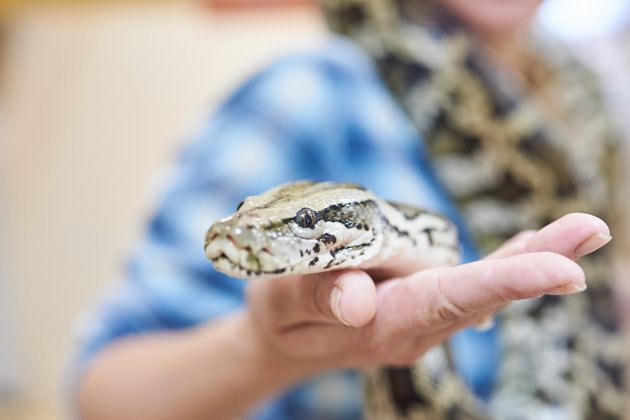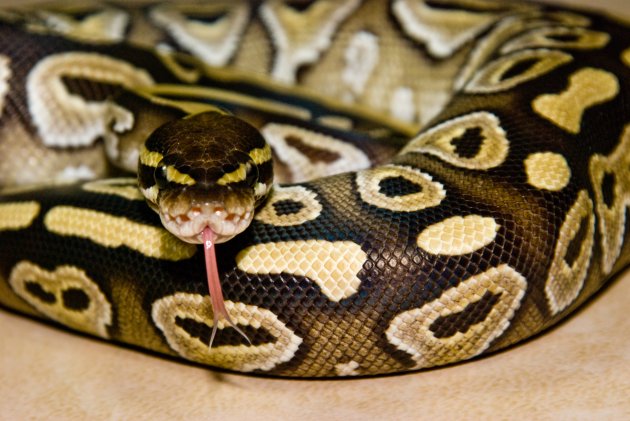Ball pythons are quite popular pets because they have various and beautiful color mutations. They are also friendly and curious.
How long do ball pythons live as pets?
The ball python can live a complete lifespan of 20-30 years on an average in a controlled environment. However, the oldest ball python recorded had a lifespan of 48 years in 1991 at the Philadelphia Zoo. But, the lifespan of ball pythons and all snakes, in general, reduces by 40-50% when living in the wild.
This shows that it actually lives longer when kept as a pet. Many factors are responsible for this.
They may include: habitation, sicknesses, the role played by predators, and the quality of care given to them among other factors.

Factor That Affects Lifespan
Habitat
Naturally, they thrive in the Savannah woodlands of West Africa. Both the climate and physical conditions are ideal there. The temperatures there are constantly moderate. There is freedom of movement, too.
What could happen in captivity?
There is a possibility of not being able to meet these ideal conditions in artificial enclosures. To begin with, the enclosures may be too small to allow ease of movement. Should this be the case, the animal may face depression due to discomfort. This can adversely affect its health and consequently, its lifespan.
These are some of the conditions that you need to ensure in the habitat:
- Enough space to maneuver - an area of up to 6 square feet and a height of up to 1 ½ feet.
- Heating devices to keep temperatures relatively high at most times.
- Moderate humidity levels to prevent skin illnesses.
- Appropriate bedding - easy to change after defecation.
Since, the personalized habitat for your ball python does not have predators and other unpredictable conditions, its lifespan may stretch to as long as it can.

Sickness as a Factor That Affects Lifespan
Just like human beings and any other animal, diseases may shorten the lifespan of this lovely constrictor. It is a tricky situation. The ball python generally does not show symptoms in the early stages of an illness. It is quite a hardy creature. However, this does not mean that it is not suffering.
Failure to look out for tale-tell signs of illnesses may affect its lifespan, since some of them may be fatal. This explains why its lifespan in the wild is relatively shorter. There is no one to look after it out there. That probably explains it.
How to check if the ball python is in good health
The ball python requires close observation. Listen to it. Watch it. You will notice anything uncommon. Does it have difficulty breathing? Is that difficulty exhibited by trying to breathe through the mouth or is it making uncommon sounds? If yes, get a vet. Some respiratory diseases may kill it.
Poor appetite and watery excretion are also pointers to a disease. Watch out for bruised skin, too. Regularly have it checked for parasitical attacks, both internal and external. Ticks are some of the common unwanted guests. Some ball pythons may also get amoebic infestations.
It follows, therefore, that is possible to overlook the possibility that your pet may be sick, sometimes fatally so. This is because it appears healthy from the outlook. The underlying conditions may eventually take a heavy toll on its health, and even if they may not be instantly fatal, they may affect its lifespan in the long run.
Proper care of the health of ball pythons may just increase its lifespan.

Predators in the Wild
Just like many other animals, ball pythons have to put up with the constant threat of predator attacks. The predators may include:
- Other snakes like some species of the black cobra.
- Man
- Carnivorous birds (large ones)
All the predators mentioned above feed on the ball python. Man is probably the most notorious of all. In West Africa, the python is a common delicacy; particularly in countries like Cameroon, Nigeria and Ghana.
The ball python is easy prey due to its not-so-large size and calm nature. It is therefore easy to catch; and constantly being hunting by man does not only shorten its lifespan, but may also eventually lead to a drastic reduction of its population.
This is another factor that is responsible for its relatively shorter lifespan in the wild compared to when it is tamed.
The cobras and flesh eating birds target ball pythons easily due to its smaller size and the fact that it is not venomous at all. The most vulnerable stage is when they are very young. The survival rate is therefore always faced with threats. Making it to adulthood in the wilderness is quite a great achievement for this species.
Even then, it is not safe since the same predators prey on it in adulthood.
The Role of Quality Care in Increasing the Lifespan of the Ball Python
In the wild, the snake can cool itself during hot temperatures. In captivity, you need to provide it with the right temperature conditions. Probably use heating devices that maintain temperature at up to 70 degrees on average on one side or end of the enclosure, while leaving the other end cool for it to cool itself when the need arises.
The right body temperature keeps its organs in the right condition for normal functionality. It also assists in proper digestion.
They should not be given live food.
Live mice, chicken, or smaller snakes may pose the danger of bites or scratches on the ball python. The main problem with such scratches is that they form wounds which may go undetected and possibly catch infections before they are treated. Some of these infections may lead to eventual death.
Feed the newly hatched young ones regularly for their stability and assured survival.
Conclusion
The ball python is one of the snake species that have a comparatively longer lifespan. It may not be longer in their natural habitat. There is probably not much information gathered on its lifespan in the wild. Records kept on domesticated ones show that they can live for more than 30 years when put under proper care.
As we have seen, it is very important to try and make sure that the enclosure in which we keep it as a pet is as close to its natural habitat conditions as it can be. This is because it has been proven that good quality care definitely increases its lifespan.
Ball Python age in human years
Ball Python to human age calculator
Ball Python Age
References and further reading:
- The Maryland Zoo. Ball Python
- senescence.info. Ball python (Python regius) Ageing and Longevity
- Christian A. S. Toudonou. (2015). Ball python (Python regius)